Kansas Highway Patrol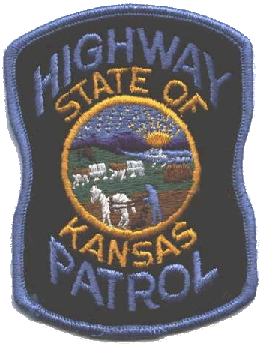
Kansas Highway Patrol
In 1933, the Kansas Legislature, Governor Alfred Landon, and Highway Department Attorney Wint Smith acted to halt the rampant bank robberies and crime sprees of the 1920s and 1930s.
They created a force of ten motor vehicle inspectors, forerunners of Kansas troopers. In 1937, the Kansas Highway Patrol was formed and comprised of a superintendent, assistant superintendent, and 45 troopers to reduce accidents by enforcing traffic, vehicle, and license laws.
That same year, the fleet included four motorcycles and 31 automobiles with silver tops and black bodies with gold shields on the doors. In 1955/56, the Patrol began to police the turnpike for the Kansas Turnpike Authority, and Protective Services began with one trooper providing the governor's ground transportation.
In the 1960s, each trooper was assigned a patrol car to improve roadway coverage, as up to that point, troopers always patrolled in pairs.
In 1976, the Patrol gained authority over the Capitol Area Security Patrol, which would become the Capitol Police, or Troop K. In 1988, authority over the Motor Carrier Inspectors passed from the Department of Revenue to the Patrol. Patrol units did not have moving radar until 1972 or video cameras until the 1990s.
The KHP is divided into 3 regions. The East Region encompasses Troops A, B and H. The Central Region encompasses Troops C and F. The West Region encompasses Troops D and E. General HQ is in Topeka, The Turnpike Troop is Troop G. Troop I is Criminal Interdiction, Canine Unit, Motor Vehicle Enforcement and Motor Carrier Safety Assistance Program. Troop J is Safety Education and Training. Capitol Policing is Troop K and Protective Services is Troop L.
From its inception in 1937 until 1973, the patrol vehicles of the Kansas Highway Patrol sported only regular passenger car license plates. Kansas license plates are issued by county and each county had a designated number assigned to it which later changed to an alphabetical designation. As the state capital was located in Topeka, KHP plates were issued out of the Shawnee County issuance office. From 1930 until 1950, Shawnee County plates were represented by the number 3 which meant that all Shawnee County plates (including KHP plates) began with a 3 prefix followed by a dash and the registration number.
In 1951, the 3 was dropped and replaced with a stacked SN prefix to preface the registration number.
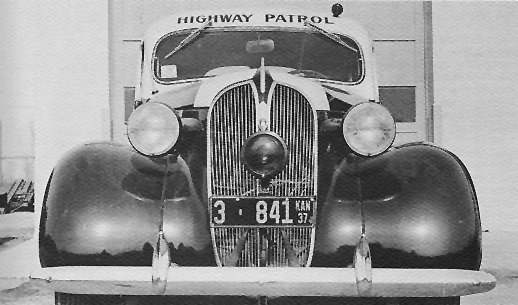
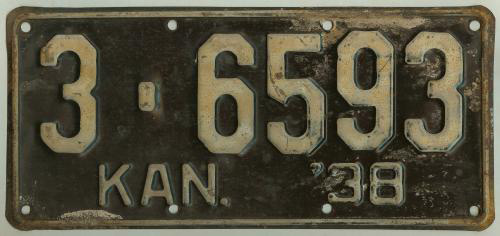 1938 Shawnee County (County 3) passenger plate. Embossed steel. Approx. 12 3/8”x 5 3/4” White over black.
1938 Shawnee County (County 3) passenger plate. Embossed steel. Approx. 12 3/8”x 5 3/4” White over black.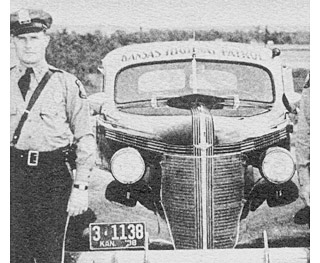
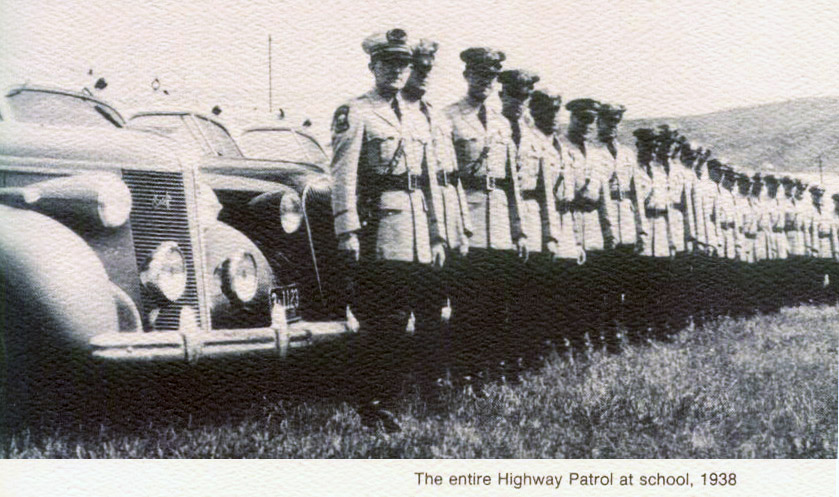
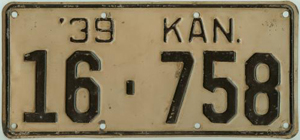 1939 passenger plate. Needs to be a 3 prefix for Shawnee County. Embossed steel. Approx. 12 3/8”x 5 3/4”
1939 passenger plate. Needs to be a 3 prefix for Shawnee County. Embossed steel. Approx. 12 3/8”x 5 3/4” 
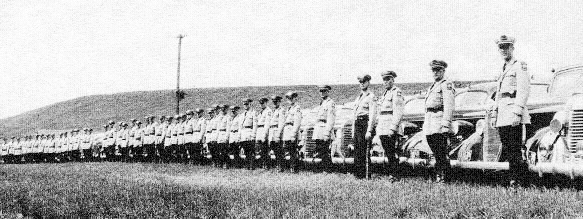
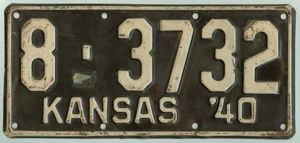 1940 passenger plate. Needs to be a 3 prefix for Shawnee County. Embossed steel. Approx. 12 3/8”x 5 3/4”
1940 passenger plate. Needs to be a 3 prefix for Shawnee County. Embossed steel. Approx. 12 3/8”x 5 3/4” 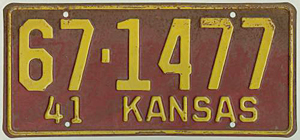 1941 passenger plate. Needs to be a 3 prefix for Shawnee County. Embossed steel. Approx. 12 3/8”x 5 3/4”
1941 passenger plate. Needs to be a 3 prefix for Shawnee County. Embossed steel. Approx. 12 3/8”x 5 3/4” 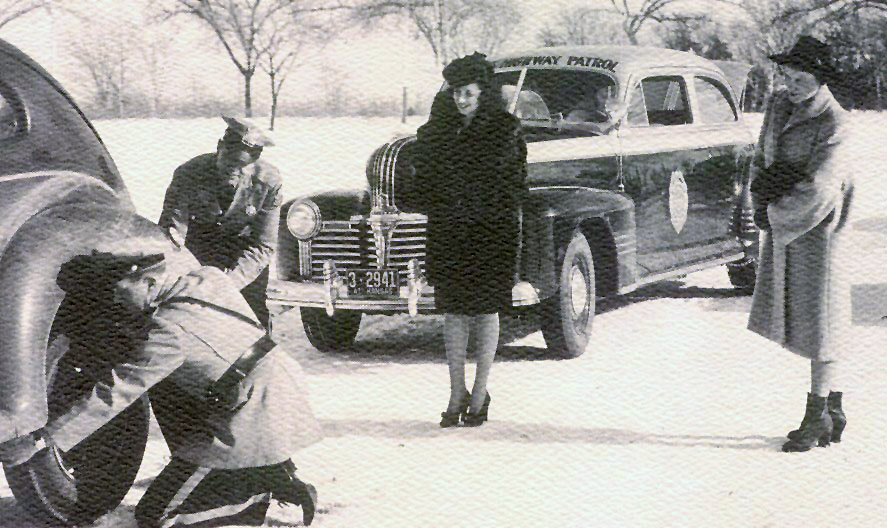
It has been stated that around 1941, the KHP had issued special titled KHP license plates possibly run only on the front of new patrol cars. There is no information on dimensions or materials used. The plate was deemed to be more square than rectangular with KANSAS over (offset) HIGHWAY over (offset) PATROL. The characters were said to be light over a dark background with four small numerals above the bottom left corner of the plate. There has been no confirmation with respect to this issue. Any clarification or photographic eveidence to this effect would be greatly appreciated.
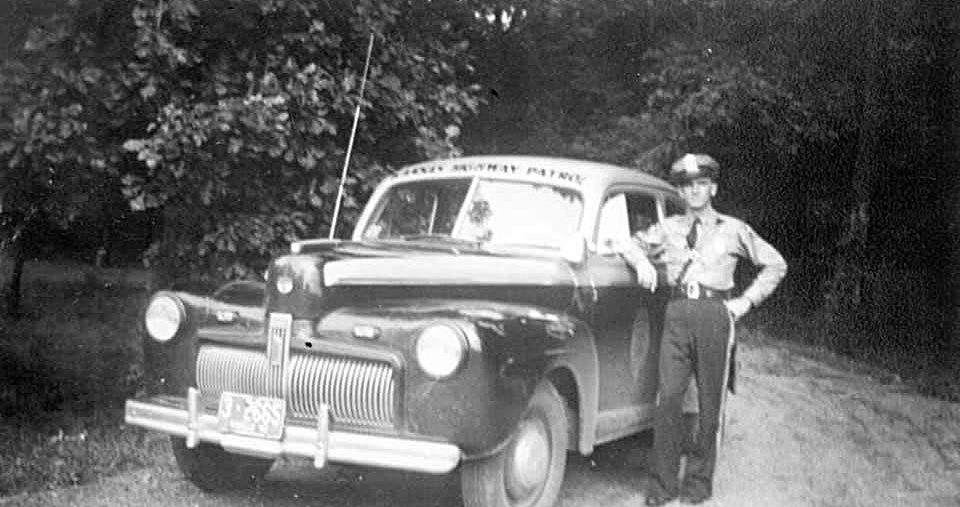
Trooper Jesse Hockett standing next to his County 3 (Shawnee) registered patrol car- 1942.
(Courtesy Jim Aitken)
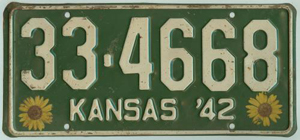 |
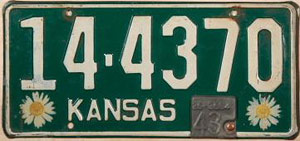 |
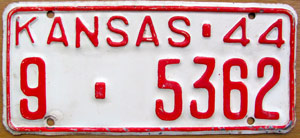 |
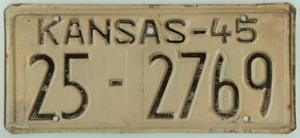 |
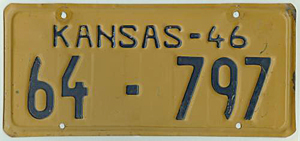 |
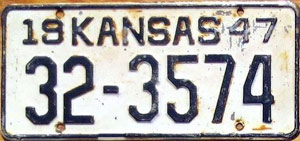 |
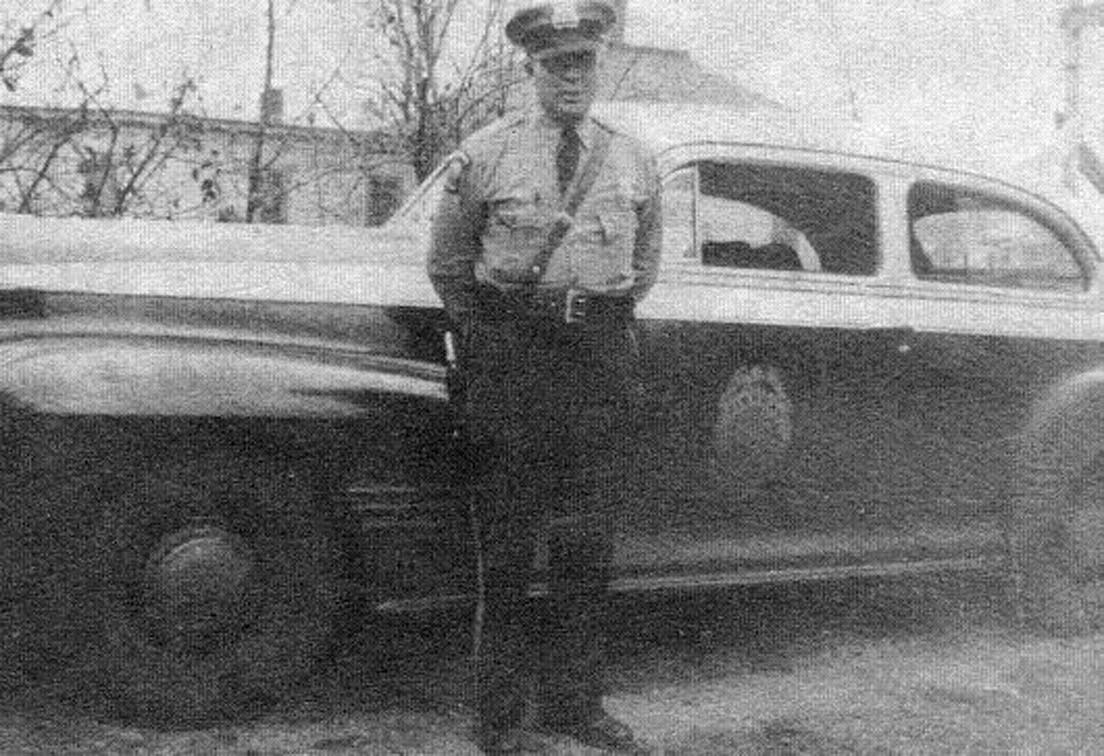
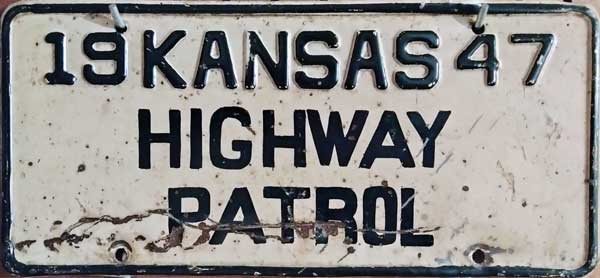 Recently-discovered 1947 Kansas Highway Patrol front license plate.
Recently-discovered 1947 Kansas Highway Patrol front license plate.
(Courtesy Bob Schluben)
 Atchison County- 1948.
Atchison County- 1948.
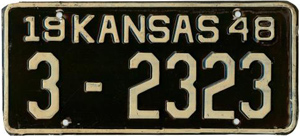 |
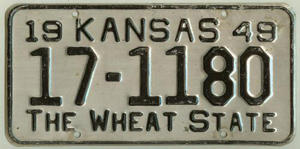 |
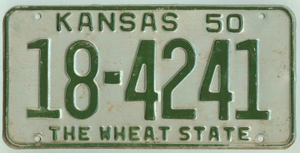 |
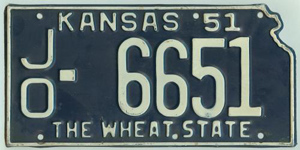 |
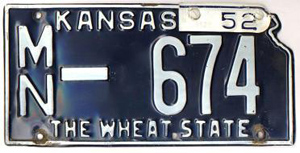 |
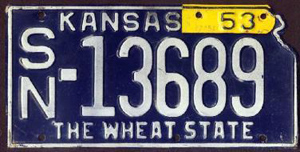 |
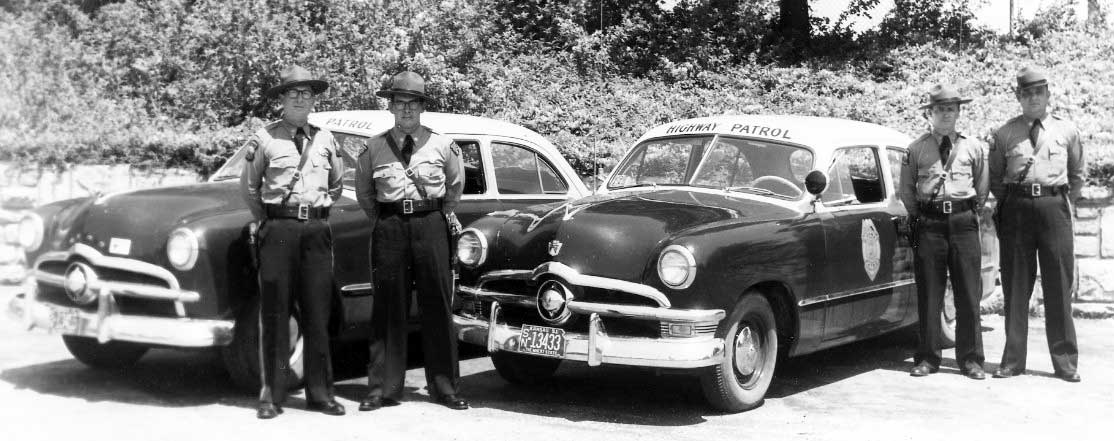
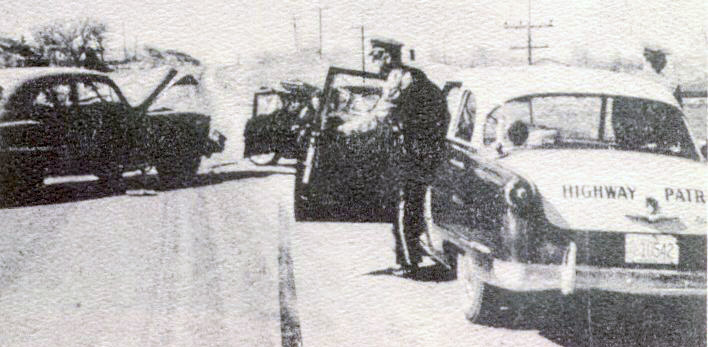 1954
1954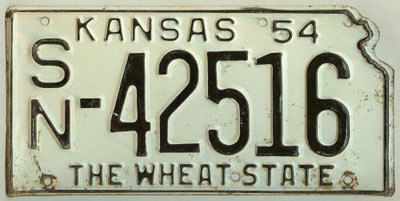 1954 Shawnee County passenger issue. Embossed steel. Approx. 12 ”x 5 7/8” Black over white. State shape.
1954 Shawnee County passenger issue. Embossed steel. Approx. 12 ”x 5 7/8” Black over white. State shape. 
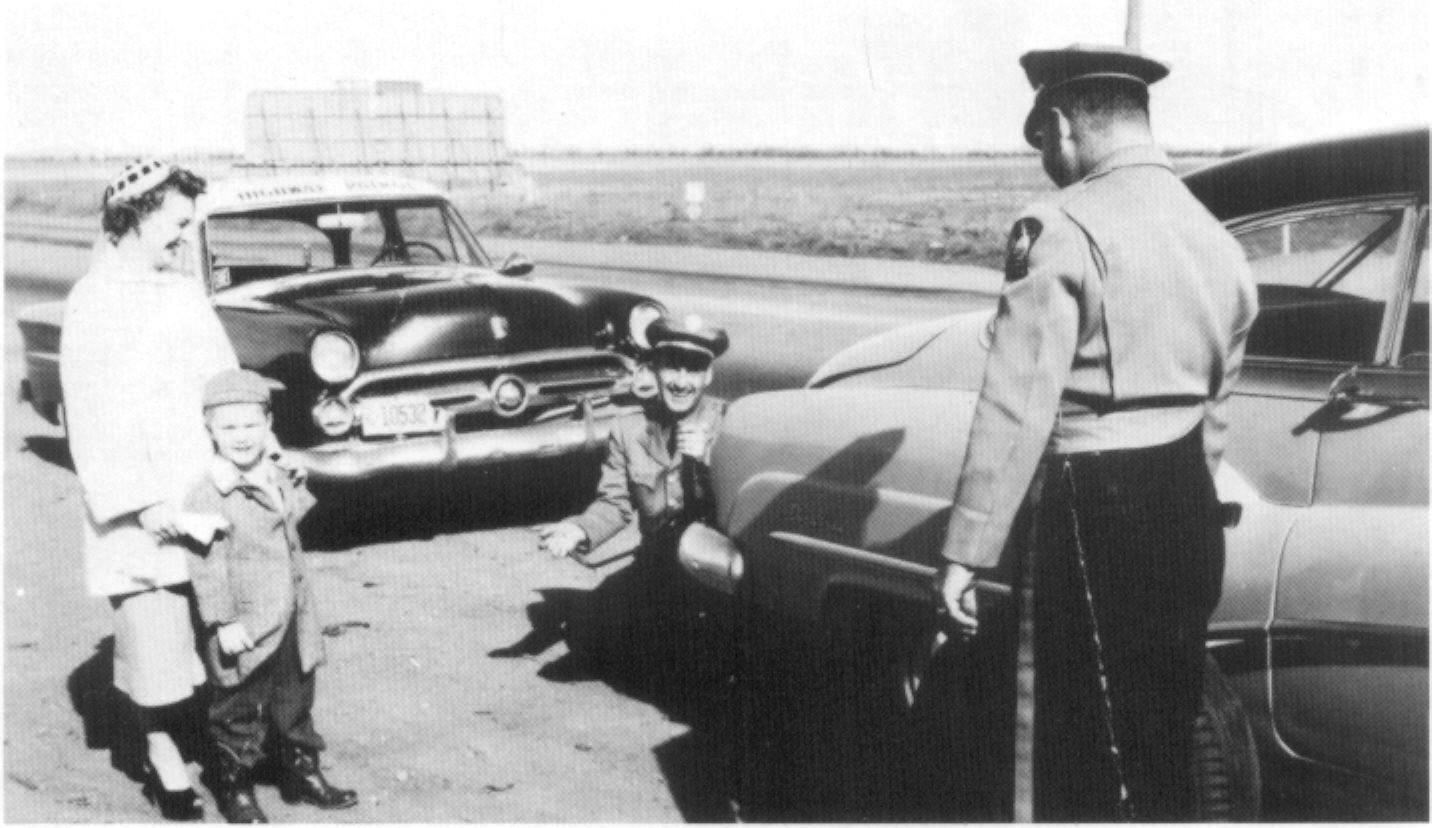
 1955 Shawnee County passenger issue. Embossed steel. Approx. 12 ”x 5 7/8” White over black. State shape.
1955 Shawnee County passenger issue. Embossed steel. Approx. 12 ”x 5 7/8” White over black. State shape. 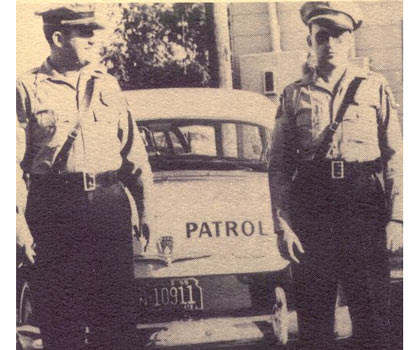 1955 Shawnee County #10911
1955 Shawnee County #10911 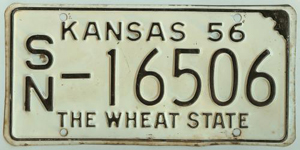 |
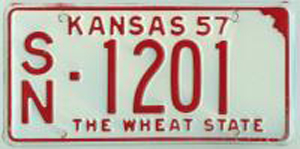 |
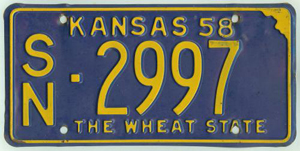 |
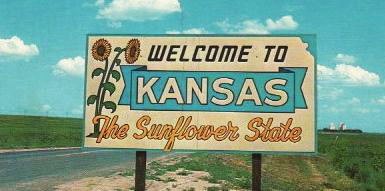
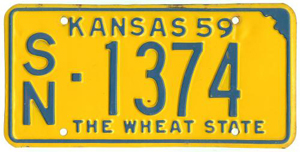 |
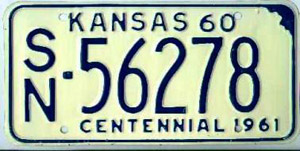 |
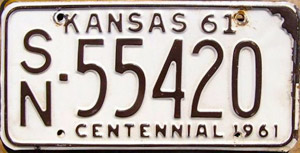 |
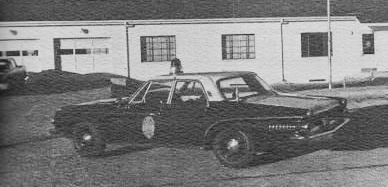
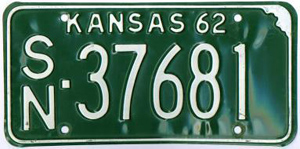 |
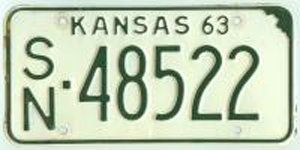 |
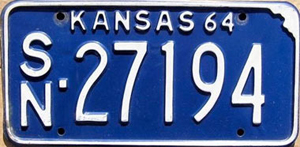 |
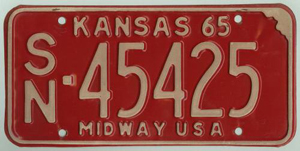 |
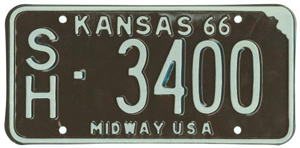 |
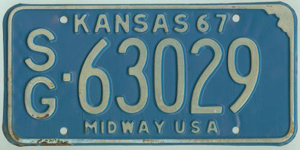 |
 1967- Using Shawnee County passenger license plate.
1967- Using Shawnee County passenger license plate.
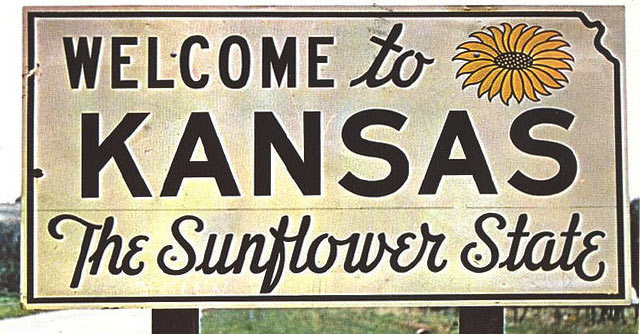
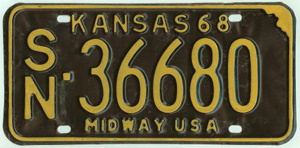 |
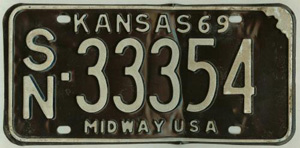 |
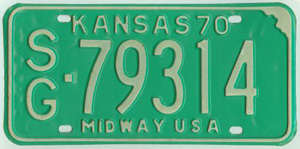 |
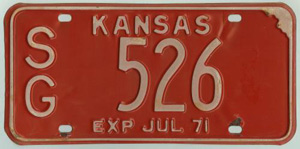 |
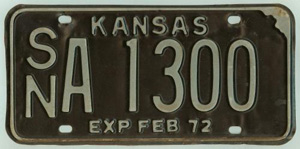 |
In July of 1973, the state of Kansas commenced issuing new license plates for official/government vehicles. The plates were yellow over brown with the state shape outline as the border around the plate. The state name was embossed along the top and OFFICIAL was embossed along the bottom of the plate. An embossed sunflower occupied the left field of the plate. License plates issued to the KHP commenced at number 300 and issued up to number 999. Numbers from 1000 and higher were used for other state and local government vehicles.
These plates were used until 1981 and two versions of this type are known. The difference is subtle as the dies used for the word OFFICIAL shows the older version as more wide and the circle inside the sunflower, a bit smaller in circumference. Some plates used reflective yellow paint for the raised portions and other issues used non-reflective yellow paint.
When the state recalled the old sunflower plates in 1981, they were summarily folded in half and tossed into a receptacle for sheering and disposal.
A couple of such plates were rescued from this fate and unfolded as shown by plates number 441 and 475 seen below.
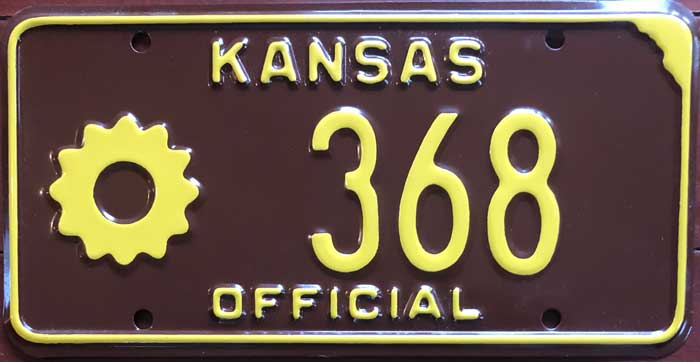 1973-1981 Sunflower Official issue.
1973-1981 Sunflower Official issue. 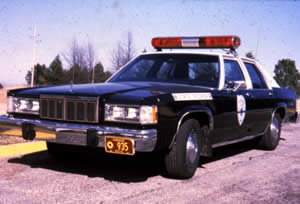 1979 KHP Mercury Marquis with plate # 935
1979 KHP Mercury Marquis with plate # 935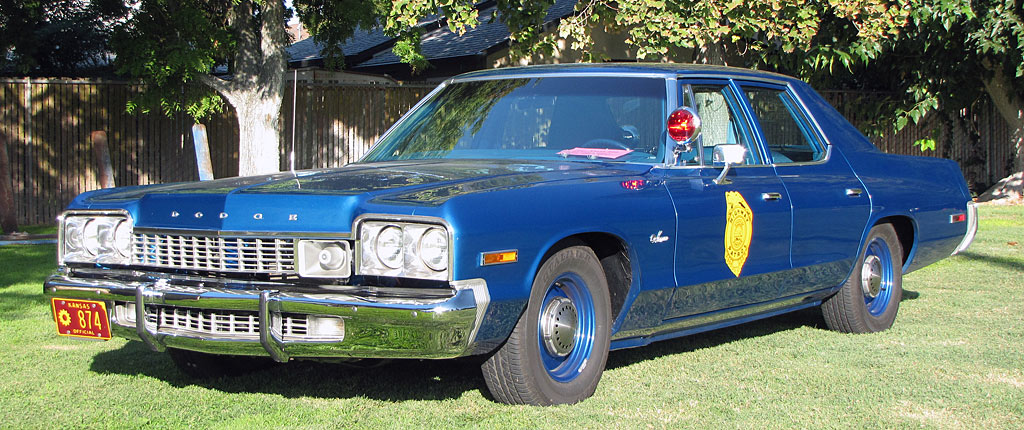
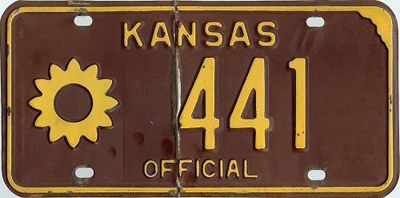 1973-1981 Sunflower Official issue. Numbers 300 to 999 assigned to KHP. Later version with larger inner section of the sunflower and smaller/narrower dies used for OFFICIAL. This plate was a rescue from destruction as seen by the unfolded crease down the center.
1973-1981 Sunflower Official issue. Numbers 300 to 999 assigned to KHP. Later version with larger inner section of the sunflower and smaller/narrower dies used for OFFICIAL. This plate was a rescue from destruction as seen by the unfolded crease down the center.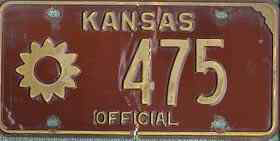 1973-1981 Sunflower Official issue. Numbers 300 to 999 assigned to KHP. Later version with larger inner section of the sunflower and smaller/narrower dies used for OFFICIAL. This plate was a rescue from destruction as seen by the unfolded crease down the center.
1973-1981 Sunflower Official issue. Numbers 300 to 999 assigned to KHP. Later version with larger inner section of the sunflower and smaller/narrower dies used for OFFICIAL. This plate was a rescue from destruction as seen by the unfolded crease down the center. Taking Care of Business- Sunflower plate #314 as a witness. 1975.
Taking Care of Business- Sunflower plate #314 as a witness. 1975.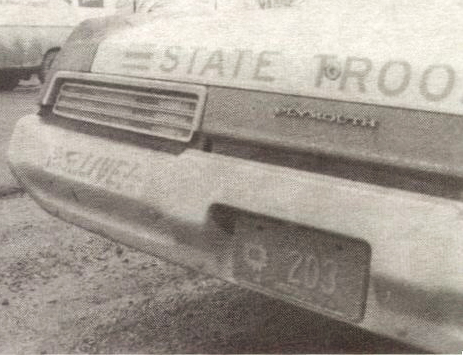
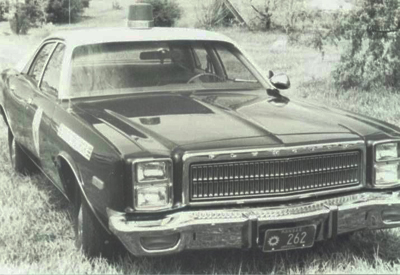 1978 Plymouth
1978 Plymouth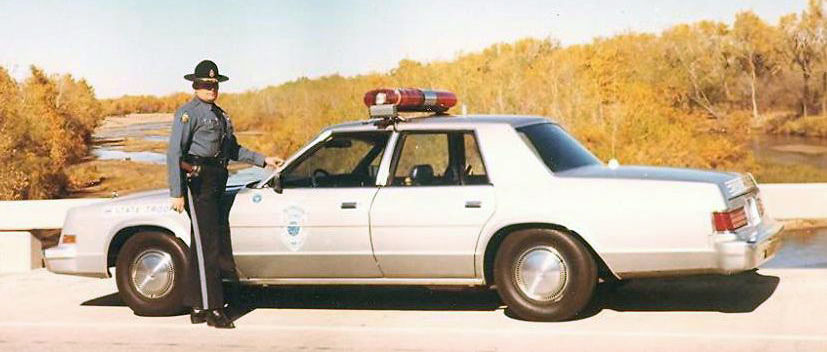 Circa 1981- Trooper Bob Wilson
Circa 1981- Trooper Bob Wilson
In 1981, KHP Colonel David Hornbaker had several KHP graphic prototype license plates made-up with his radio number (K) 282 embossed on them. The license plates were silkscreened graphic types with only the assignment number embossed. The state name was silkscreened along the top of the plate between the the upper mounting holes. A highly-detailed depiction of the KHP shirt badge occupied the far center left portion of the plate followed by the embossed radio number up to three digits. The lower portion of the plate read HIGHWAY PATROL and was silkscreened between the lower mounting holes. Colonel Hornbaker had the plate prototypes done in a variety of color combinations (blue, red, green and yellow) for the silkscreened portions of the plate while the embossed numbers remained blue.
The approved design was selected as the all-blue version.
The new blue over reflective white graphic license plates began adorning the front and rear of marked KHP vehicles later that same year. Ranks of Troopers and Sergeants were issued the first batch as Lieutenants and up ran regular Kansas passenger car plates on their vehicles.
Practice at the time was that each KHP trooper was assigned a radio number which remained with them thoughout their career. When their patrol cars got miled-out, the old plates were transferred to the new car. Once that trooper retired, the new trooper who received the retiree's radio number received a new set of plates with that radio number, while the retiree had one of his old plates mounted on a plaque. It is unknown if this practice still continues today.
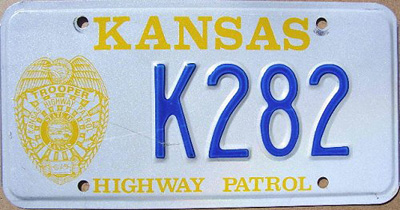 1981 prototype. Features Radio Call Number for KHP Colonel David Hornbaker. Several versions of this prototype were made featuring graphics in different colors while keeping the embossed numbers in blue. Yellow graphic example.
1981 prototype. Features Radio Call Number for KHP Colonel David Hornbaker. Several versions of this prototype were made featuring graphics in different colors while keeping the embossed numbers in blue. Yellow graphic example.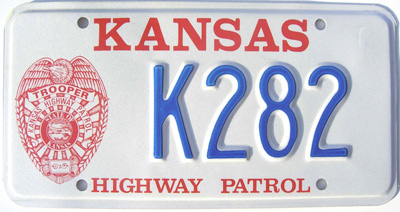 1981 prototype. Features Radio Call Number for KHP Colonel David Hornbaker. Several versions of this prototype were made featuring graphics in different colors while keeping the embossed numbers in blue. Red graphic example.
1981 prototype. Features Radio Call Number for KHP Colonel David Hornbaker. Several versions of this prototype were made featuring graphics in different colors while keeping the embossed numbers in blue. Red graphic example.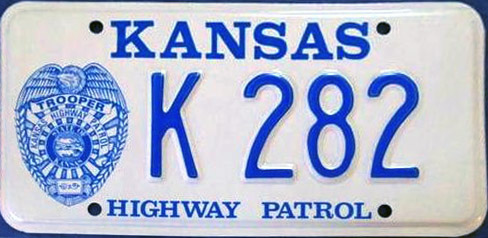 1981 prototype. Features Radio Call Number for KHP Colonel David Hornbaker. Several versions of this prototype were made featuring graphics in different colors while keeping the embossed numbers in blue. Blue graphic example.
1981 prototype. Features Radio Call Number for KHP Colonel David Hornbaker. Several versions of this prototype were made featuring graphics in different colors while keeping the embossed numbers in blue. Blue graphic example.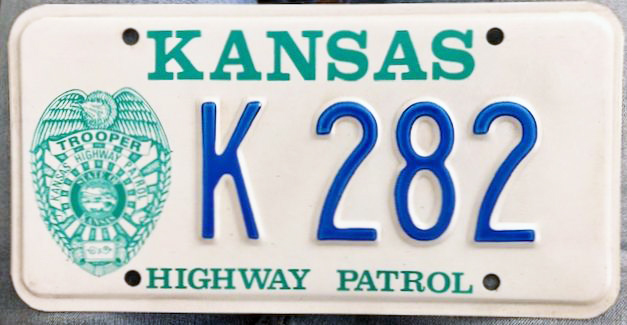 1981 prototype. Features Radio Call Number for KHP Colonel David Hornbaker. Several versions of this prototype were made featuring graphics in different colors while keeping the embossed numbers in blue. Green graphic example.
1981 prototype. Features Radio Call Number for KHP Colonel David Hornbaker. Several versions of this prototype were made featuring graphics in different colors while keeping the embossed numbers in blue. Green graphic example.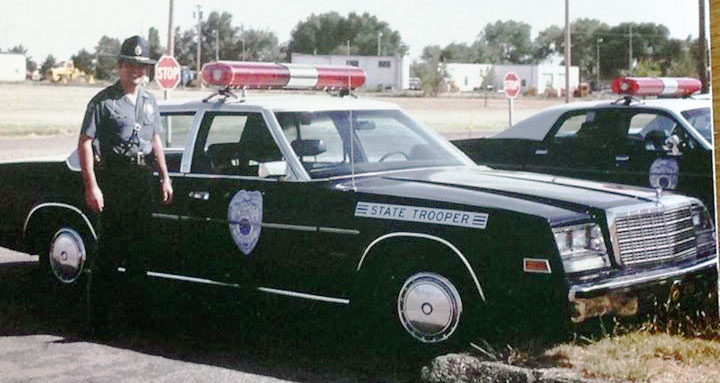 Circa 1981
Circa 1981 1981- Circa 2000 issue.
1981- Circa 2000 issue. 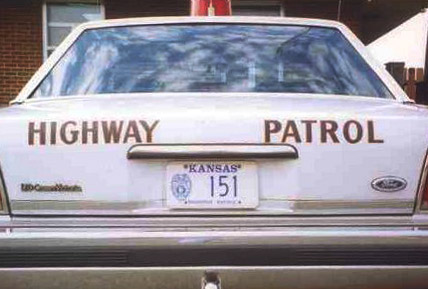 (Courtesy Jay Weinstein)
(Courtesy Jay Weinstein)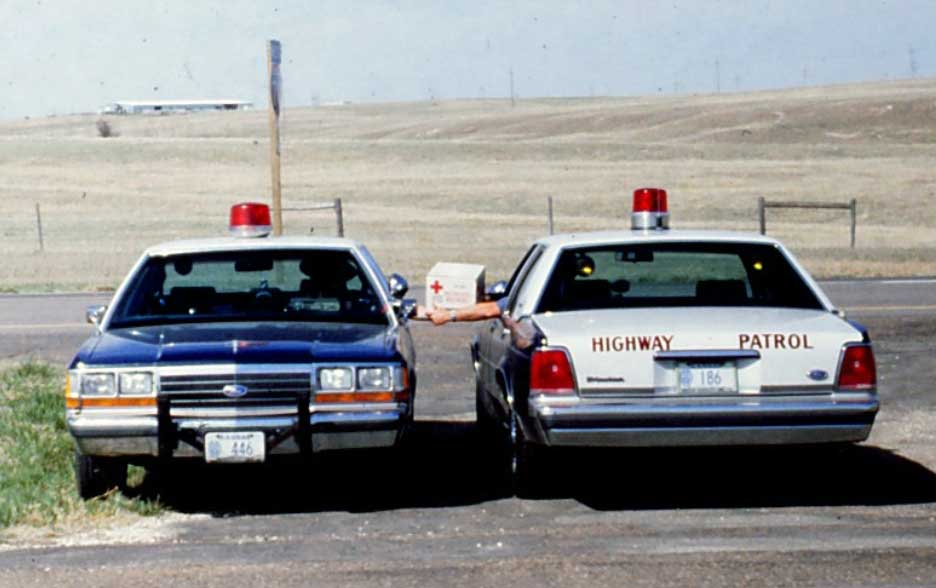
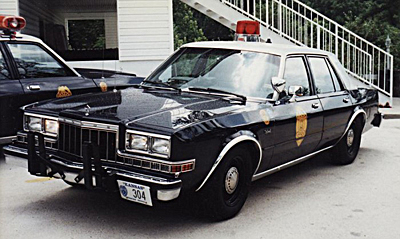 KHP Dodge Diplomat with number 304
KHP Dodge Diplomat with number 304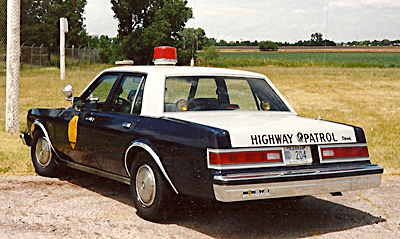 KHP Dodge Diplomat with number 204
KHP Dodge Diplomat with number 204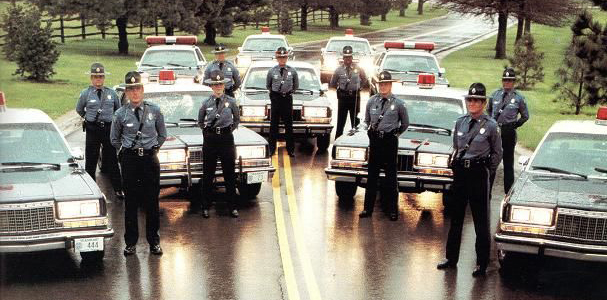
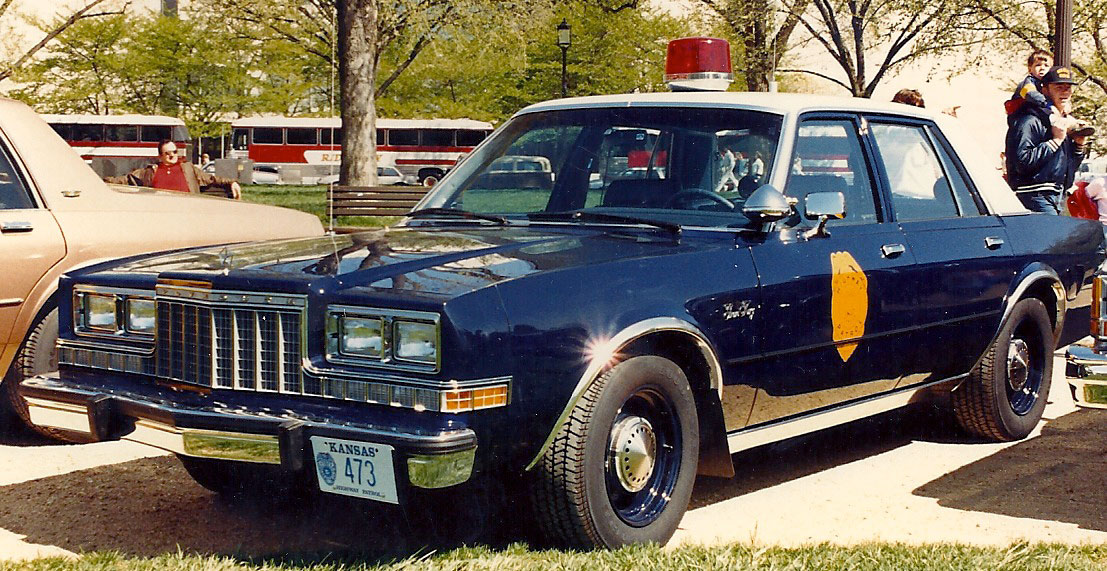
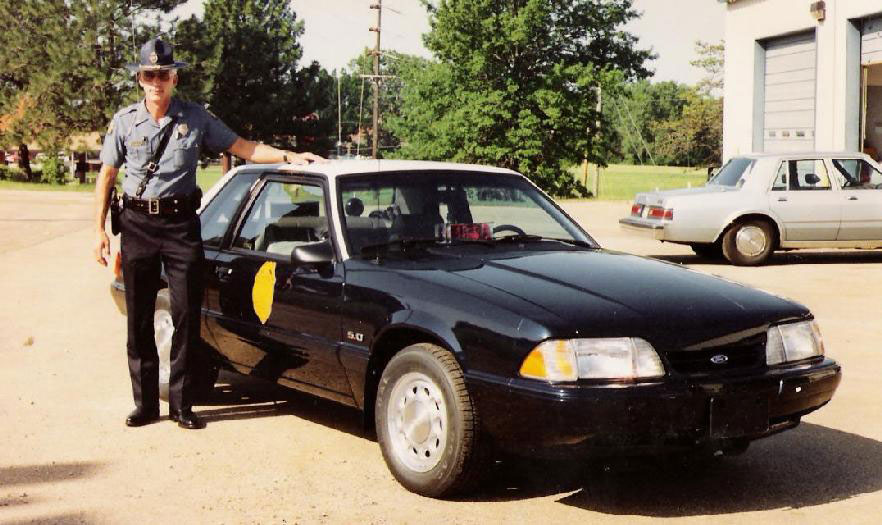
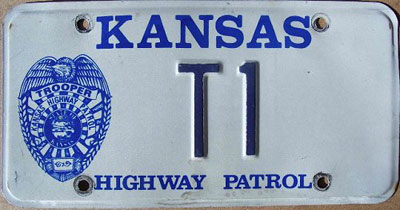 1981-Circa 2000 issue. Training Car number 1.
1981-Circa 2000 issue. Training Car number 1. 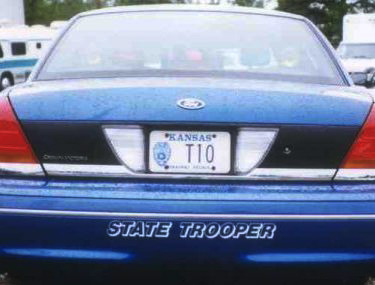 (Courtesy Jay Weinstein)
(Courtesy Jay Weinstein)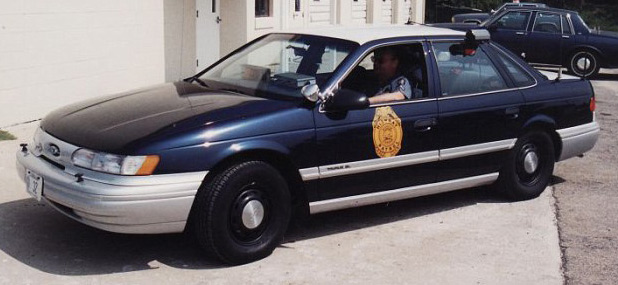
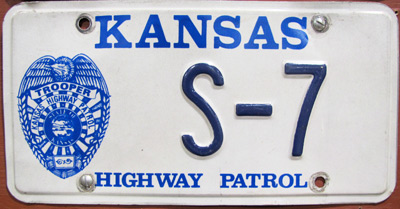 1981-Circa 2000 issue. There is no confirmation as of yet as to the S prefix. Some think it means Spare, others Safety and others Service.
1981-Circa 2000 issue. There is no confirmation as of yet as to the S prefix. Some think it means Spare, others Safety and others Service. 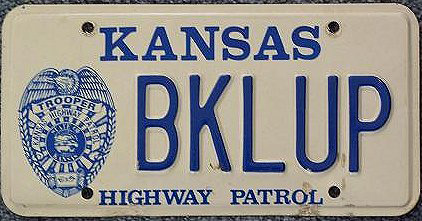 1981-Circa 2000 issue. Buckle Up plate used on Roll-Over simulator device for education to the public about the need to wear seatbelts.
1981-Circa 2000 issue. Buckle Up plate used on Roll-Over simulator device for education to the public about the need to wear seatbelts.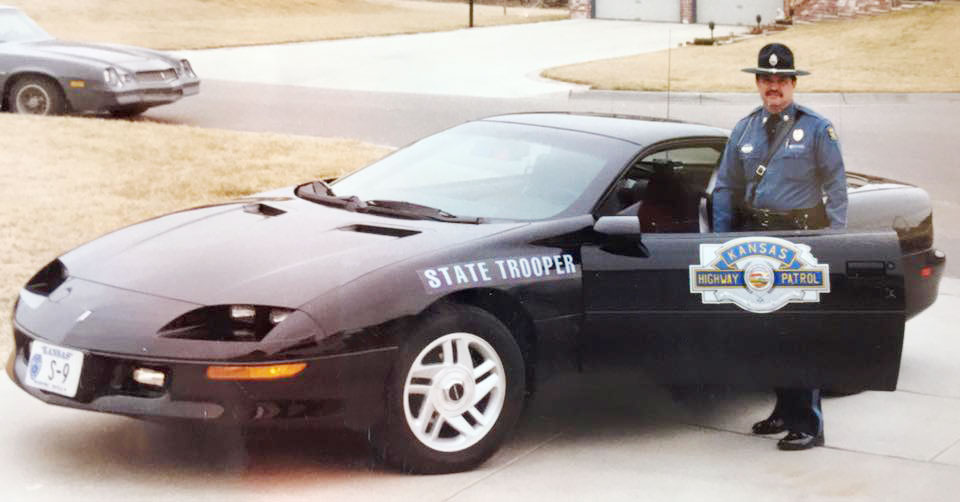 The legendary KHP Tpr. Gene Garcia with his S-9 Camaro-Circa 1995.
The legendary KHP Tpr. Gene Garcia with his S-9 Camaro-Circa 1995. 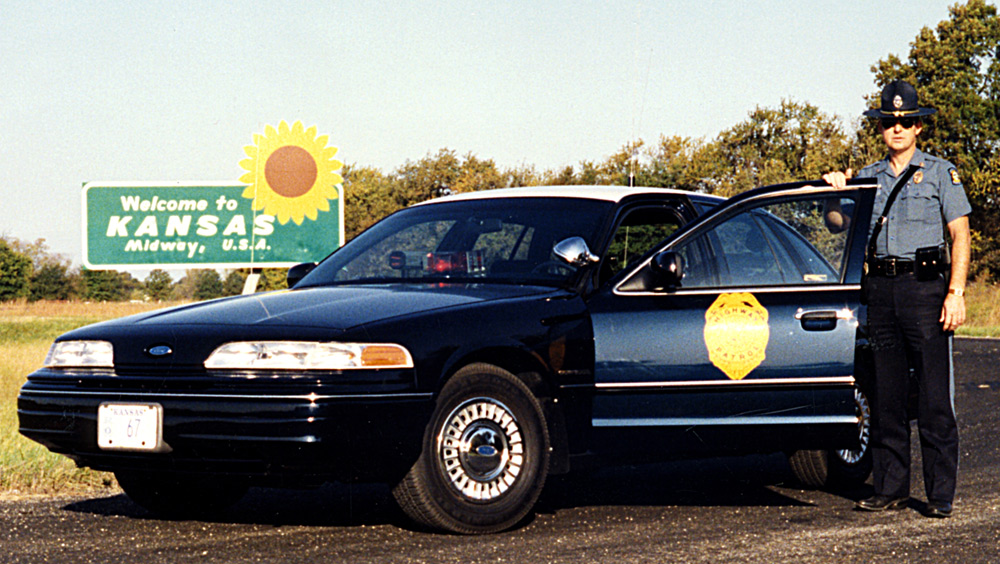
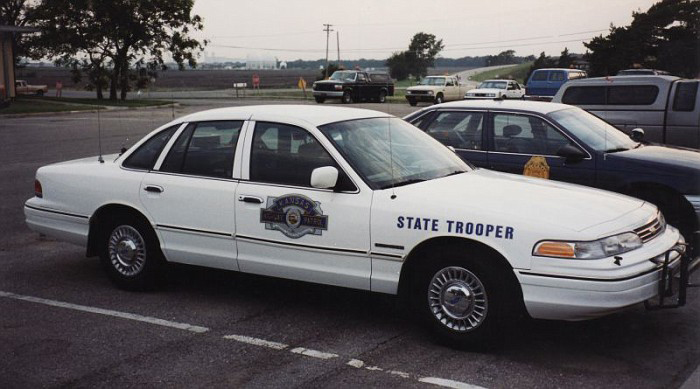
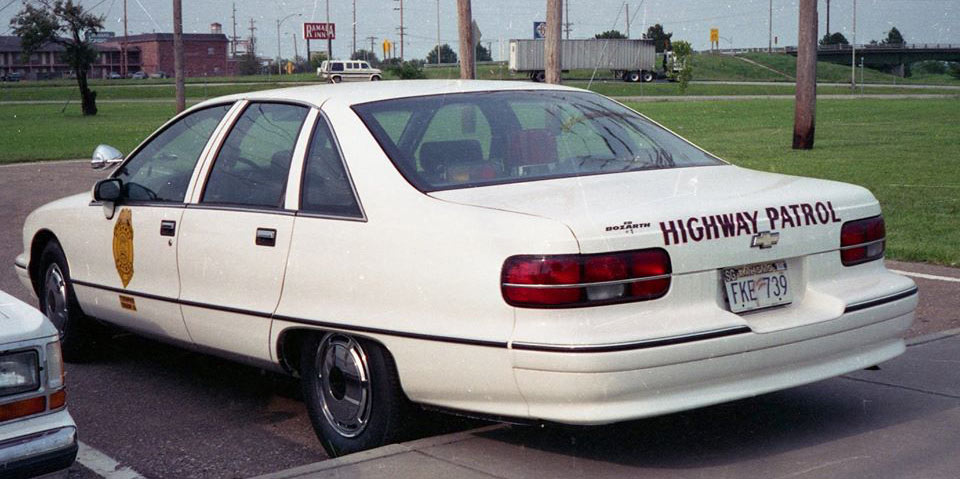 Kansas Highway Patrol (Turnpike) Chevy Caprice with 1988-1994 issue Kansas passenger car plate.
Kansas Highway Patrol (Turnpike) Chevy Caprice with 1988-1994 issue Kansas passenger car plate.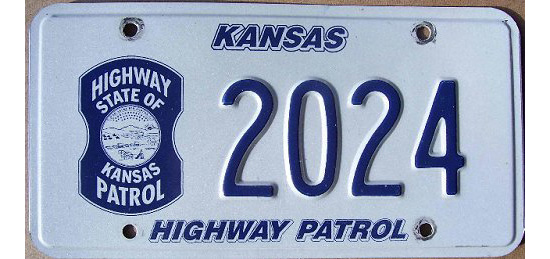 Circa 1990's-2000's (exact launch year unknown). KHP graphic patch plate issue. Numbers in the 20XX number bloc are used mostly (but not exclusively) on KHP Motorist Assistance vehicles. Staff operating these vehicles are employees of the KHP but are not sworn troopers. They render assistance to motorists in distress. They operate mostly in Wichita and the Kansas City Metropolitan areas.
Circa 1990's-2000's (exact launch year unknown). KHP graphic patch plate issue. Numbers in the 20XX number bloc are used mostly (but not exclusively) on KHP Motorist Assistance vehicles. Staff operating these vehicles are employees of the KHP but are not sworn troopers. They render assistance to motorists in distress. They operate mostly in Wichita and the Kansas City Metropolitan areas.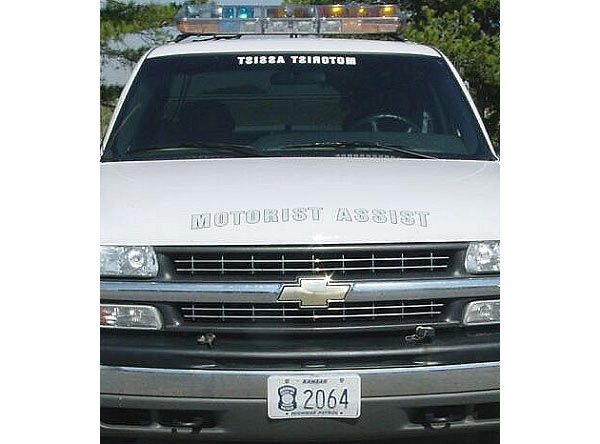 (Courtesy of John W Cook)
(Courtesy of John W Cook)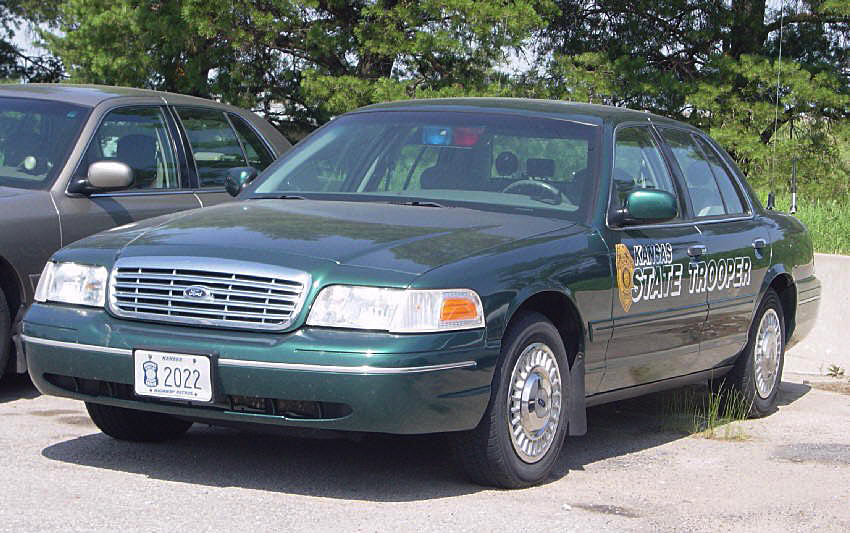
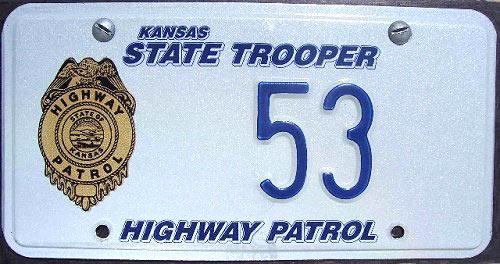 Circa 2000-2012 issue. Features entire title: KANSAS STATE TROOPER along the top center of the plate.
Circa 2000-2012 issue. Features entire title: KANSAS STATE TROOPER along the top center of the plate. 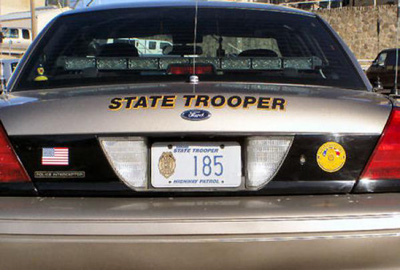
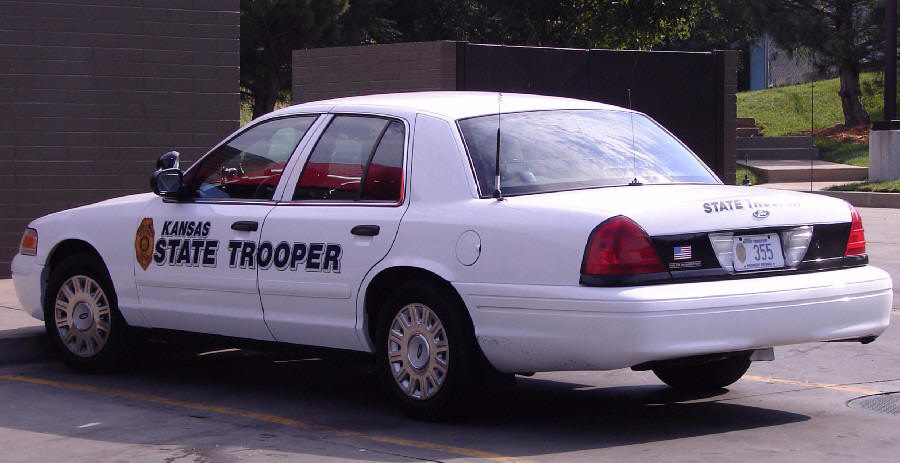
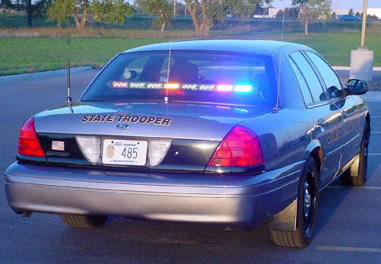
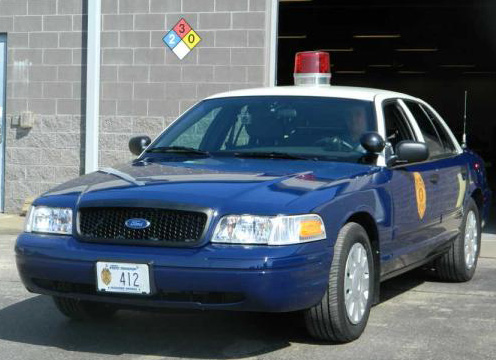 Old style blue and white livery and single red rotator light
Old style blue and white livery and single red rotator light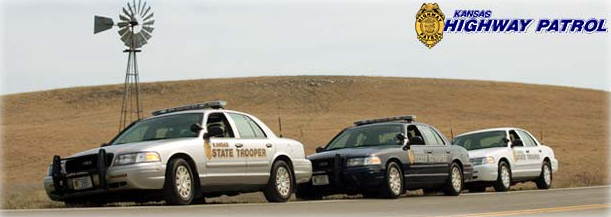
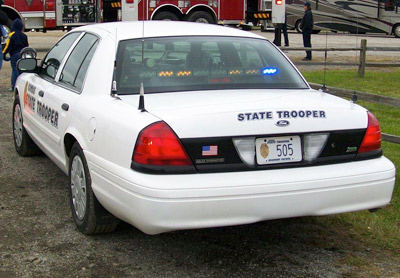
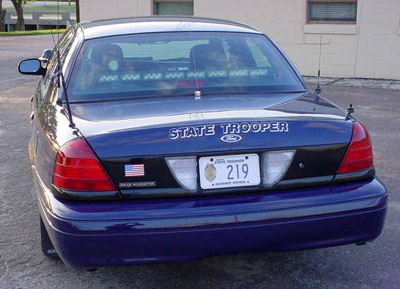
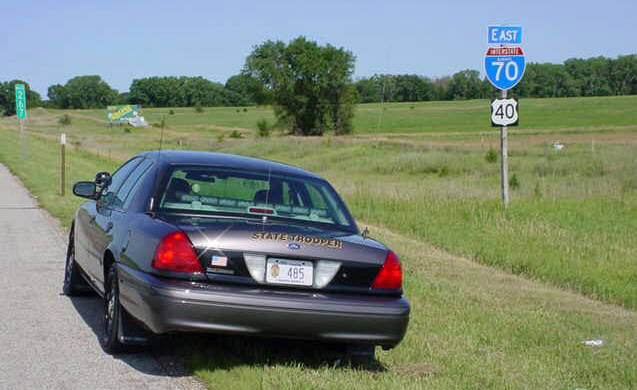
In 2012, the Kansas Highway Patrol re-plated the fleet with yet another attractive graphic license plate.
The background features a stylized design with blue bands on the top and bottom of the plate.
The same masthead of KANSAS HIGHWAY PATROL from the previous issue is still used at the top.
A redesigned KHP eagle-top badge is situated to the left of the embossed number.
The lower legend of the plate has SERVICE-COURTESY-PROTECTION.
The license plates of the KHP Capitol Police and Motor Carrier Enforcement were also issued new distinctive license plates in 2012.
The background features a grey-toned enlarged section of a wheat sprig over a reflective white backgound.
The same masthead of KANSAS HIGHWAY PATROL from the previous issue is still used at the top.
A stylized rendition of the KHP shoulder patch occupies the left portion of the plate where the background of the emblem showcases a section of the American flag.
The assignment number is embossed to the right, and the bottom of the plate has the legend www.KansasHighwayPatrol.org between the lower mounting holes.
So far this version has been only seen on Capitol Police vehicles.
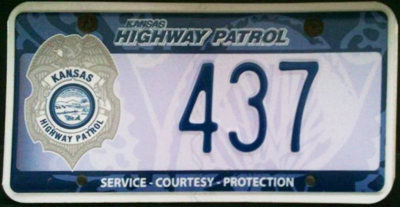 2012-2016 issue.
2012-2016 issue.
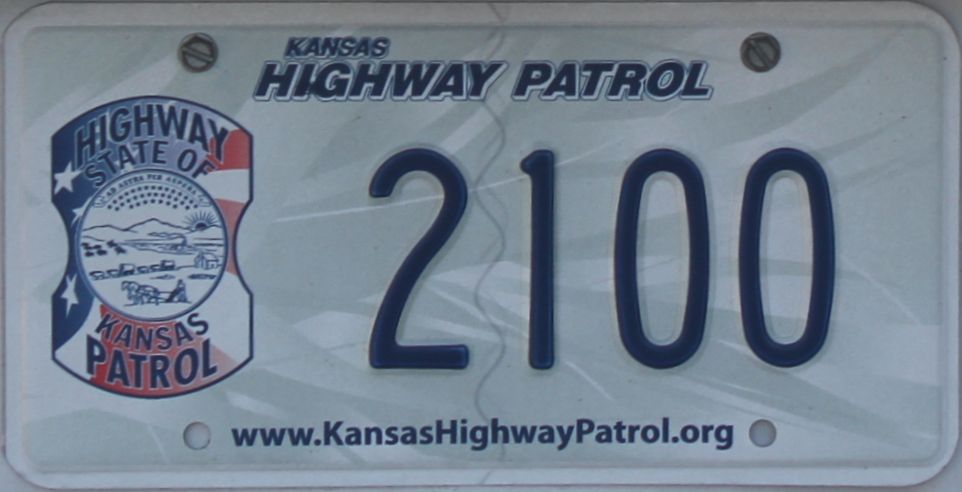 2012-2016 issue. Assignment number for Capitol Police.
2012-2016 issue. Assignment number for Capitol Police.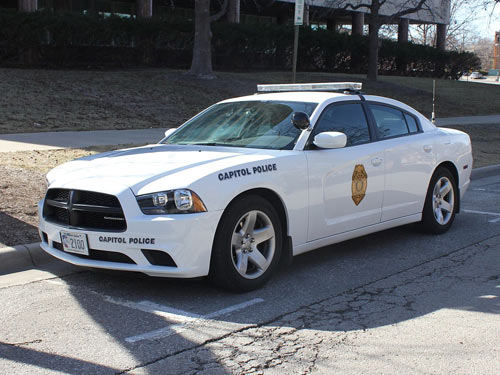
Late 2016 saw the Kansas Highway Patrol preparing for its upcoming 80th Anniversary celebrations in 2017.
One method of commemorating such an auspicious occasion was to launch yet another attractive graphic license plate for the marked KHP fleet.
The new plates were made of aluminum with an embossed numeral and debossed border. The outline of the plate was white which allowed for a state outline in black and deep blue inside the perimeter of the plate.
STATE TROOPER appeared silkscreened in gold against a black top band spanning the top center of the plate.
Another black band spanning the bottom portion of the plate featured the slogan "Serving Kansas Since 1937" silkscreened in gold.
A gold KHP breast badge appears in full color on the left center field of the plate. The embossed assignment numeral is painted in white and is placed over a wide center field span of textured royal blue in a tight circular mesh motif.
Some have dubbed this style the "Thin Blue Line" design.
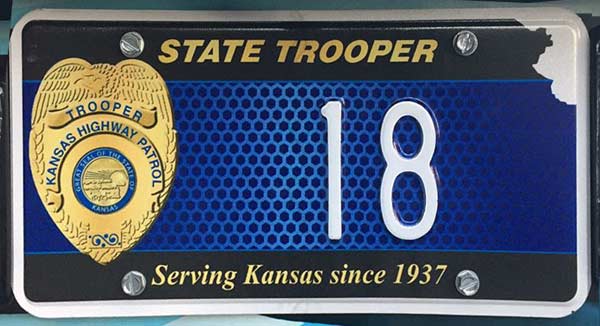 Late 2016-Current issue.
Late 2016-Current issue. 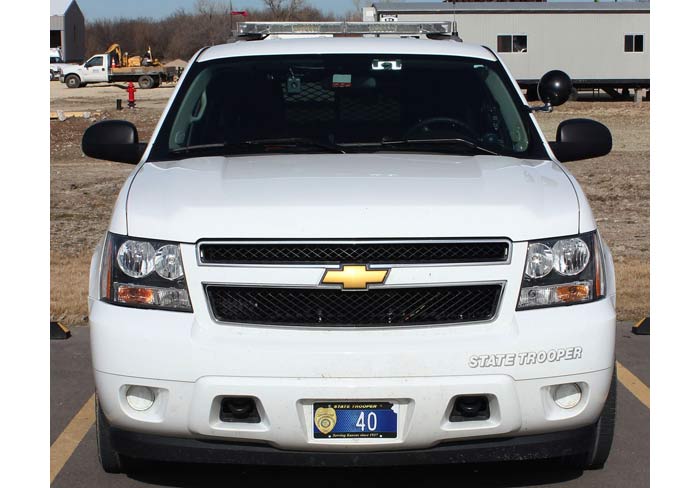 (Courtesy John Cook)
(Courtesy John Cook)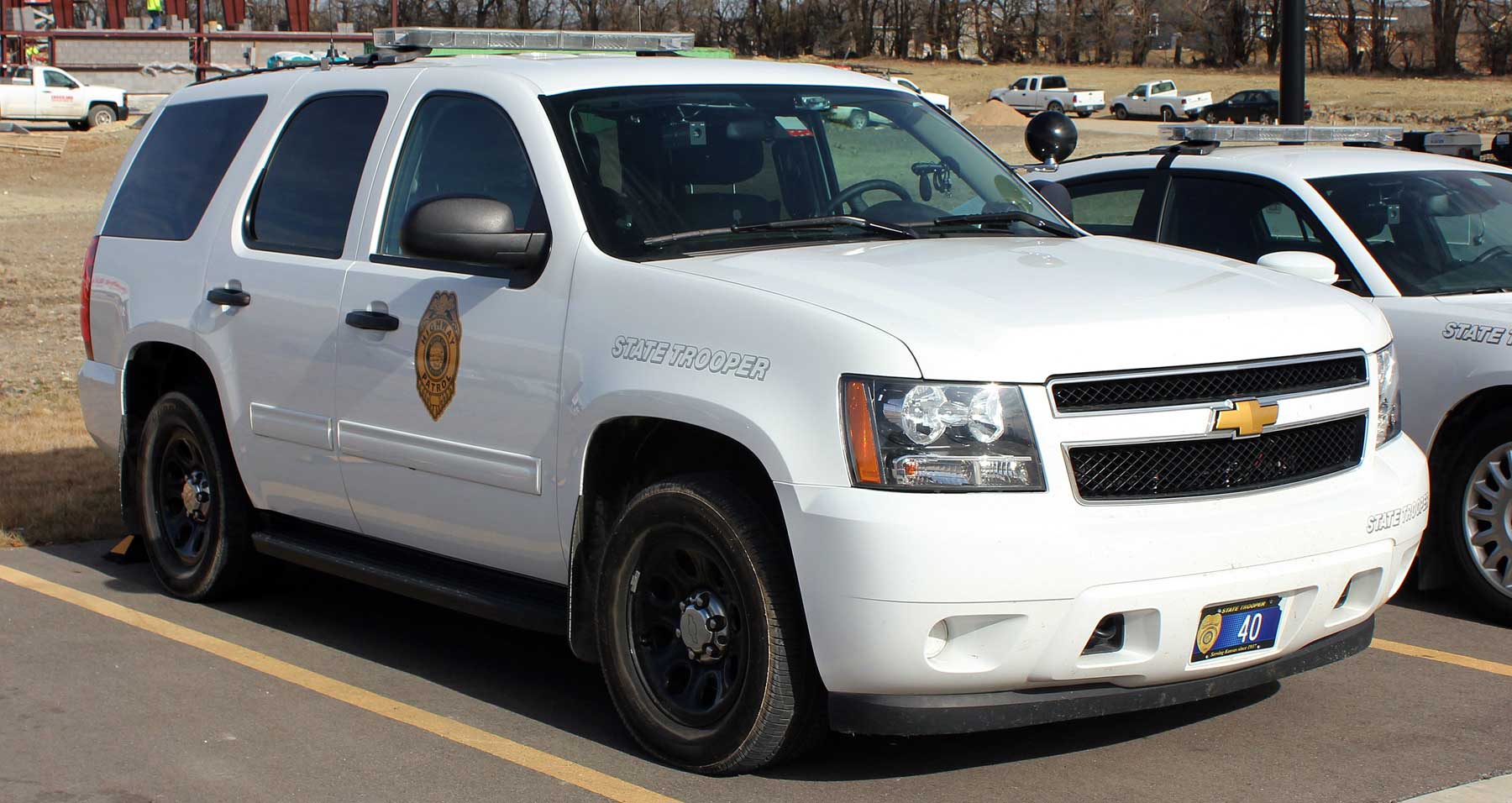 (Courtesy John Cook)
(Courtesy John Cook)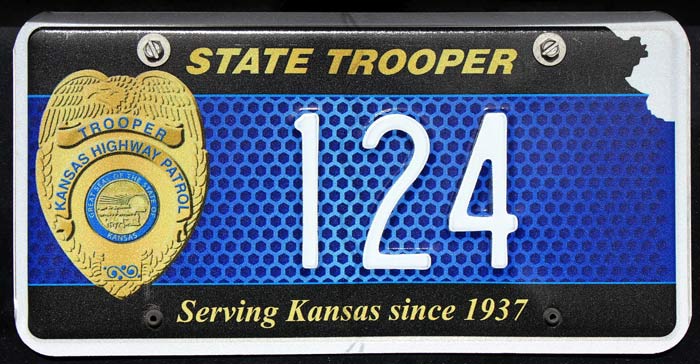 Late 2016-Current issue.
Late 2016-Current issue. 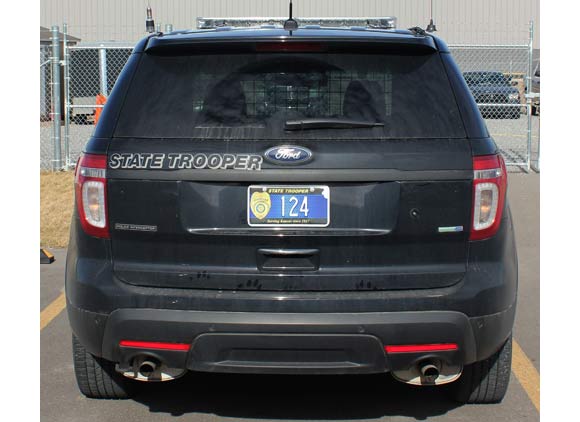 (Courtesy John Cook)
(Courtesy John Cook) In May of 2020, Colonel Herman T. Jones ordered some of the KHP fleet wrapped in the "Grey Back" livery of the classic KHP fleet from the days of old.
In May of 2020, Colonel Herman T. Jones ordered some of the KHP fleet wrapped in the "Grey Back" livery of the classic KHP fleet from the days of old. 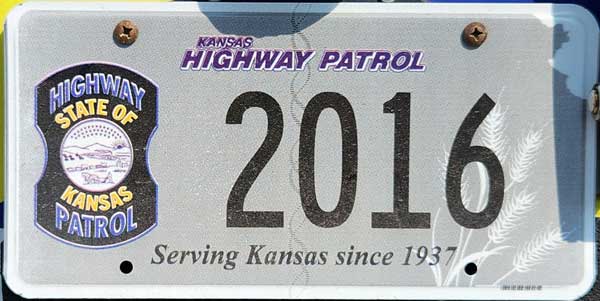 Circa 2022-Current KSP Motorist Assist issue.
Circa 2022-Current KSP Motorist Assist issue.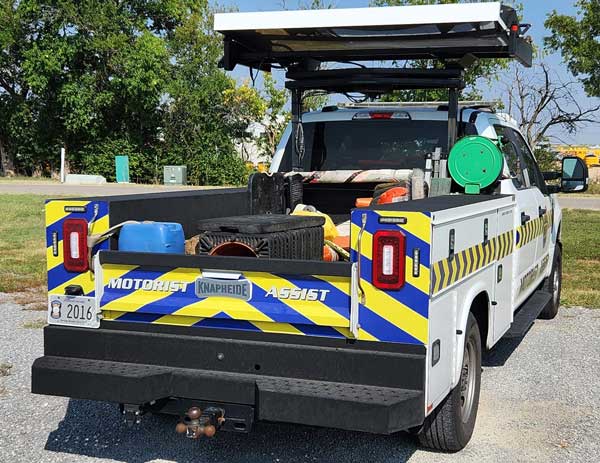 (Courtesy John Cook)
(Courtesy John Cook) 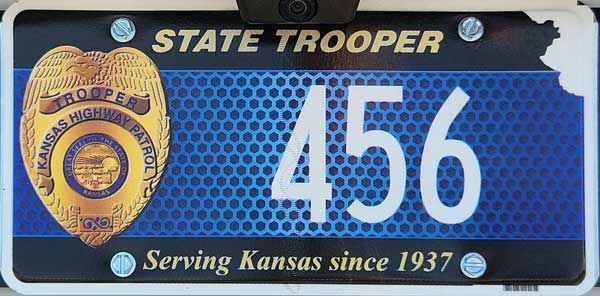 2023-Current issue.
2023-Current issue. 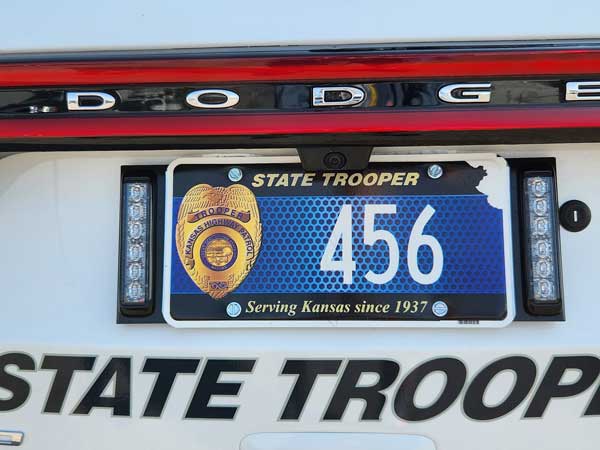 (Courtesy John Cook)
(Courtesy John Cook) 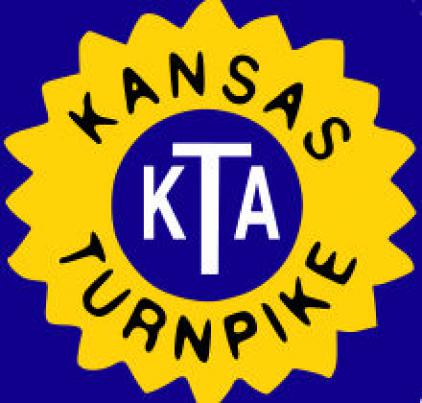
The Kansas Turnpike opened to traffic on October 25 1956. The highway runs a length of 236 miles from Kansas City Kansas to the Oklahoma border south of Wichita. Traffic enforcement and general policing of the highway has been the mandate of Troop G of the Kansas Highway Patrol. Troop G also provides security at the interchange and service areas, deal with unpaid tolls, and perform special projects for the Kansas Turnpike Authority (KTA), which contracts with the Patrol for Troop G's services. As a result of this arrangement, license plates of KHP Troop G patrol cars are distinctively different from the plates of their other Troops.
The plates are reflective blue and white. Some are made of plastic, others of aluminum. They utilize a distinctive honeycomb reflective material typically found on highway signage. The KHP hat badge design precedes the Radio Call Number.
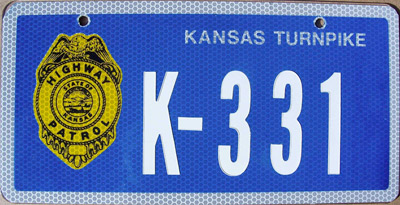 Early 1980's version with K prefix and thin/narrow decal-applied numerals. Only two round upper mounting holes. Issued to Trooper Gary Haak assigned out of Lawrence KS.
Early 1980's version with K prefix and thin/narrow decal-applied numerals. Only two round upper mounting holes. Issued to Trooper Gary Haak assigned out of Lawrence KS.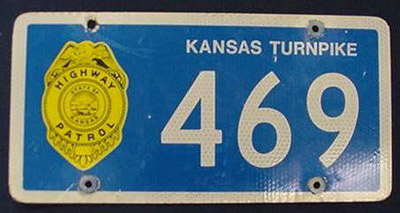 Later 1980's version with no K prefix and four round upper mounting holes. Numerals are not decals.
Later 1980's version with no K prefix and four round upper mounting holes. Numerals are not decals.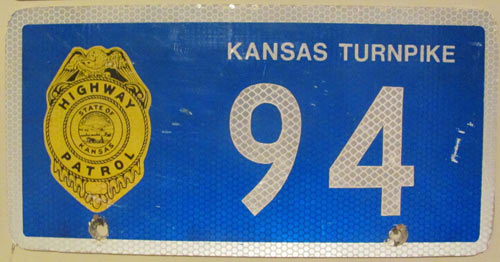 1980's-1990's issue with only lower mounting slots.
1980's-1990's issue with only lower mounting slots.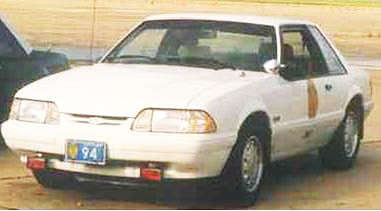 SSP Mustang of KHP Troop G Trooper Gene Garcia.
SSP Mustang of KHP Troop G Trooper Gene Garcia.
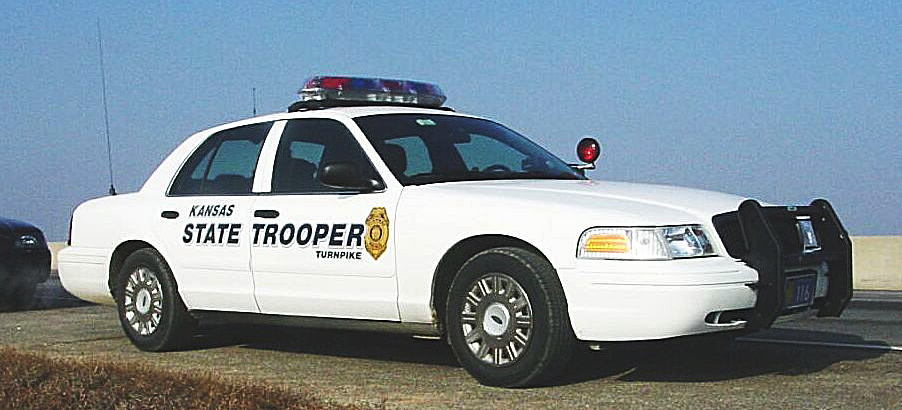
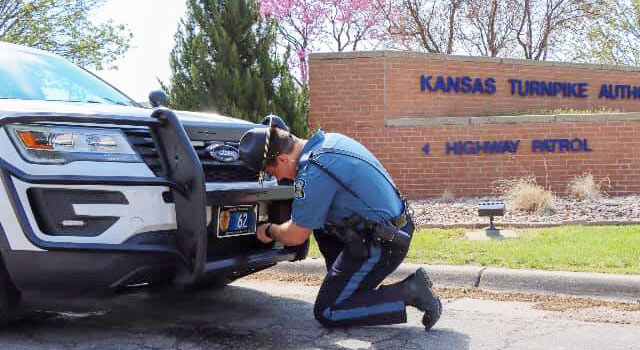 "I'm sure Norm could use this for his collection...."
"I'm sure Norm could use this for his collection...."
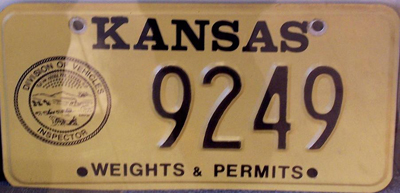 Kansas Division of Vehicles Weights and Permits Inspector's issue.
Kansas Division of Vehicles Weights and Permits Inspector's issue. 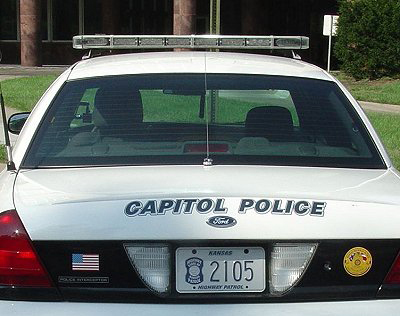
The Kansas Highway Patrol utilized motorcycles as a large part of its patrol fleet in the 1930's and phased out in the 1940's. It is unknown as to when motorcycles made a resurgence with the KHP after that time, however there is a circa 1974 KHP Harley Davidson located at the KHP museum. This motorcycle bears a motorcycle-sized license plate in the colors of the 1973-1981 Official Sunflower plates used on KHP cars of the day. The plate is yellow over brown with the state outline as a border. KANSAS occupies the top center of the plate, with CYCLE embossed vertically along the left margin of the plate. The embossed number is 29.
There is a motorcycle version of the 1981-Circa 2000 KHP graphic license plate as well as seen below.

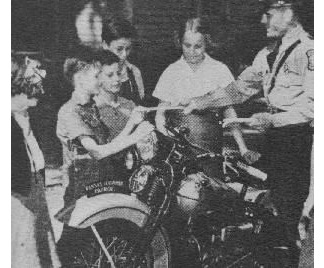
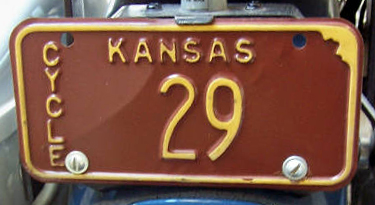 1973-1981 Official motorcycle issue.
1973-1981 Official motorcycle issue.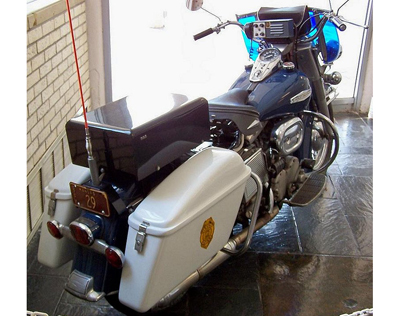
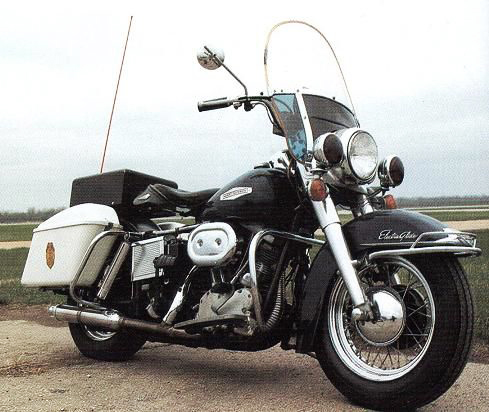
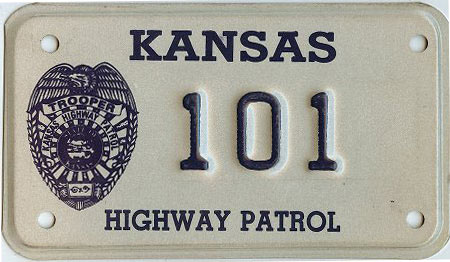 1981-Circa 2000 motorcycle issue
1981-Circa 2000 motorcycle issue
The National Troopers Coalition hosted their annual conference in Kansas sometime between 1995 and 2001. A special souvenir license plate was provided to NTC delegates in attendance that had the word TROOPER screened in black on a 1995-2001 Kansas passenger car baseplate.
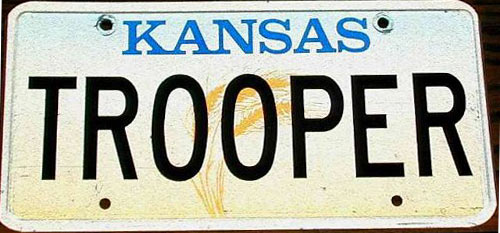 National Troopers Coalition conference delegate souvenir plate. Exact year unknown but utilizes a 1995-2001 Kansas passenger car baseplate.
National Troopers Coalition conference delegate souvenir plate. Exact year unknown but utilizes a 1995-2001 Kansas passenger car baseplate.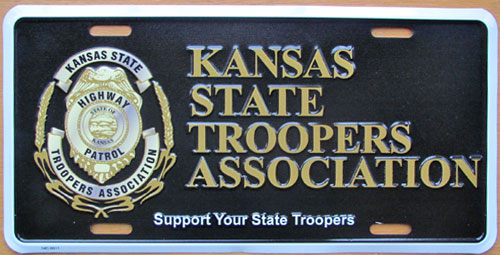 Current Kansas State Troopers Association booster plate.
Current Kansas State Troopers Association booster plate.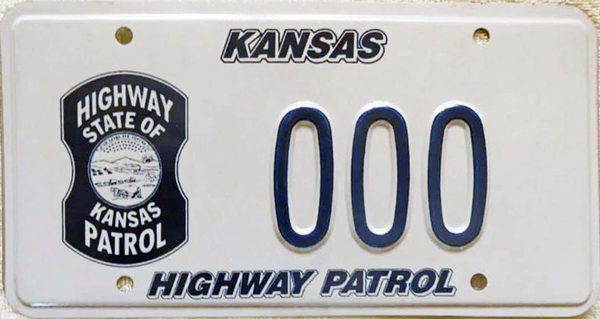 1990's-2000's Patch issue SAMPLE.
1990's-2000's Patch issue SAMPLE.